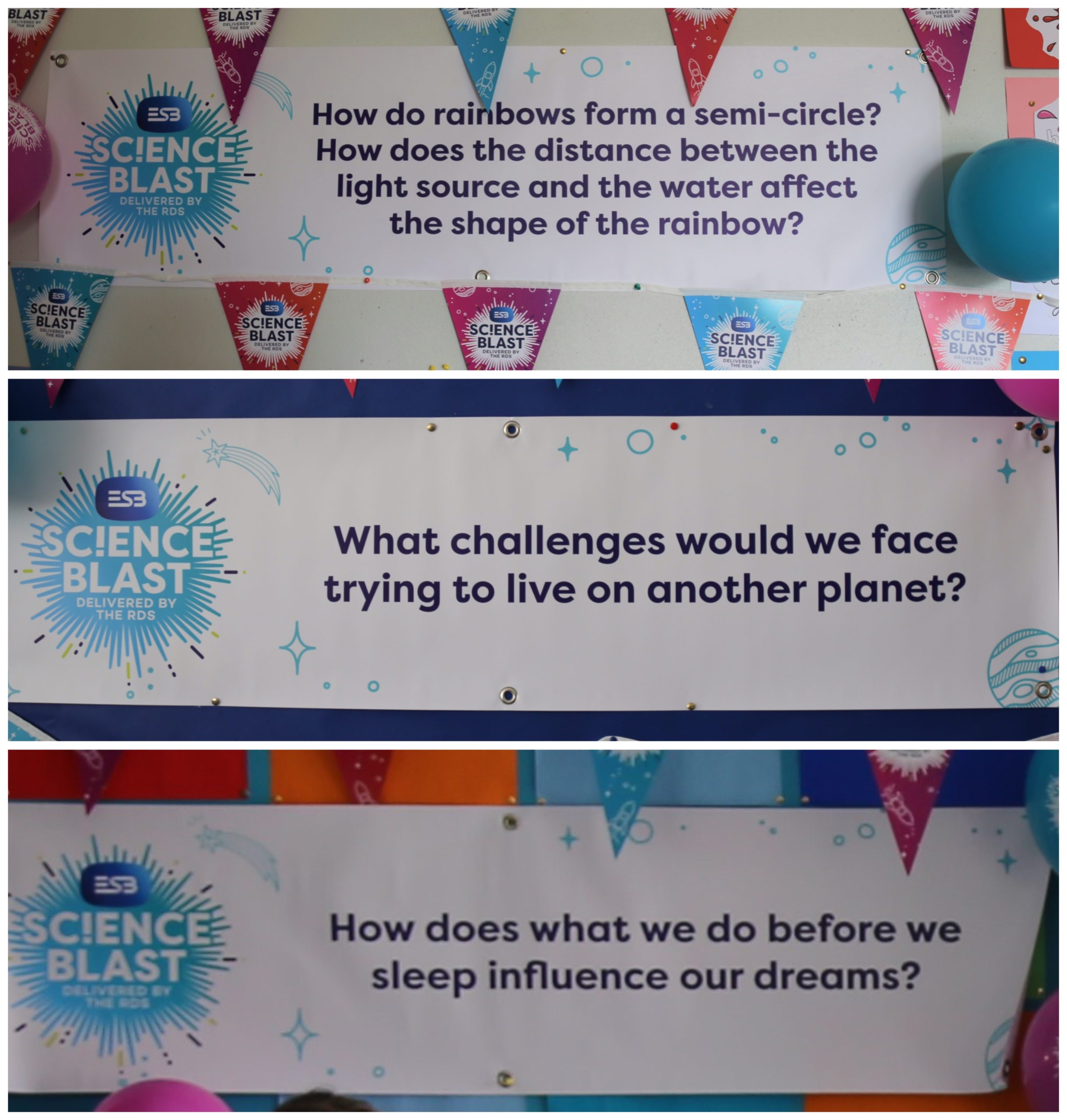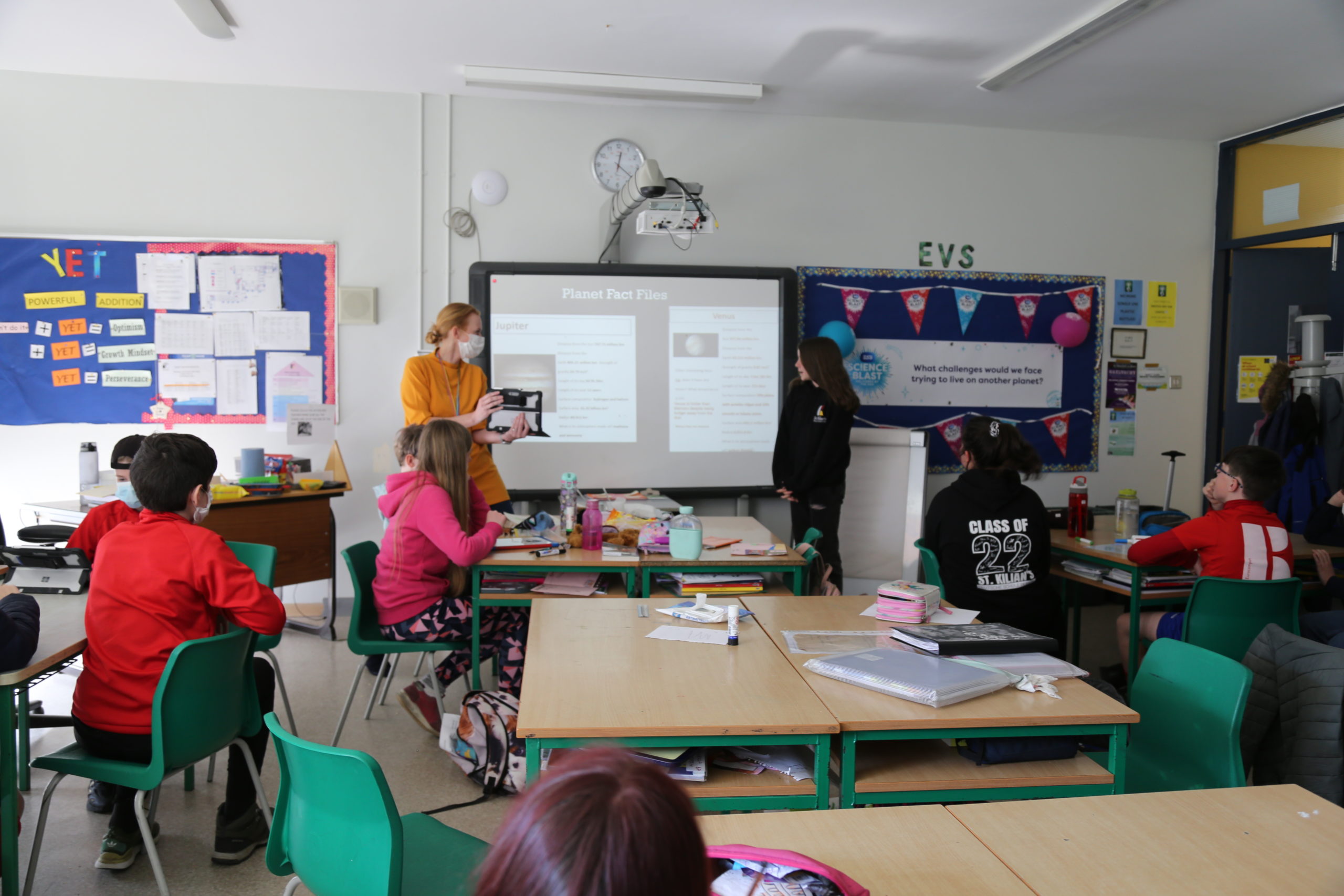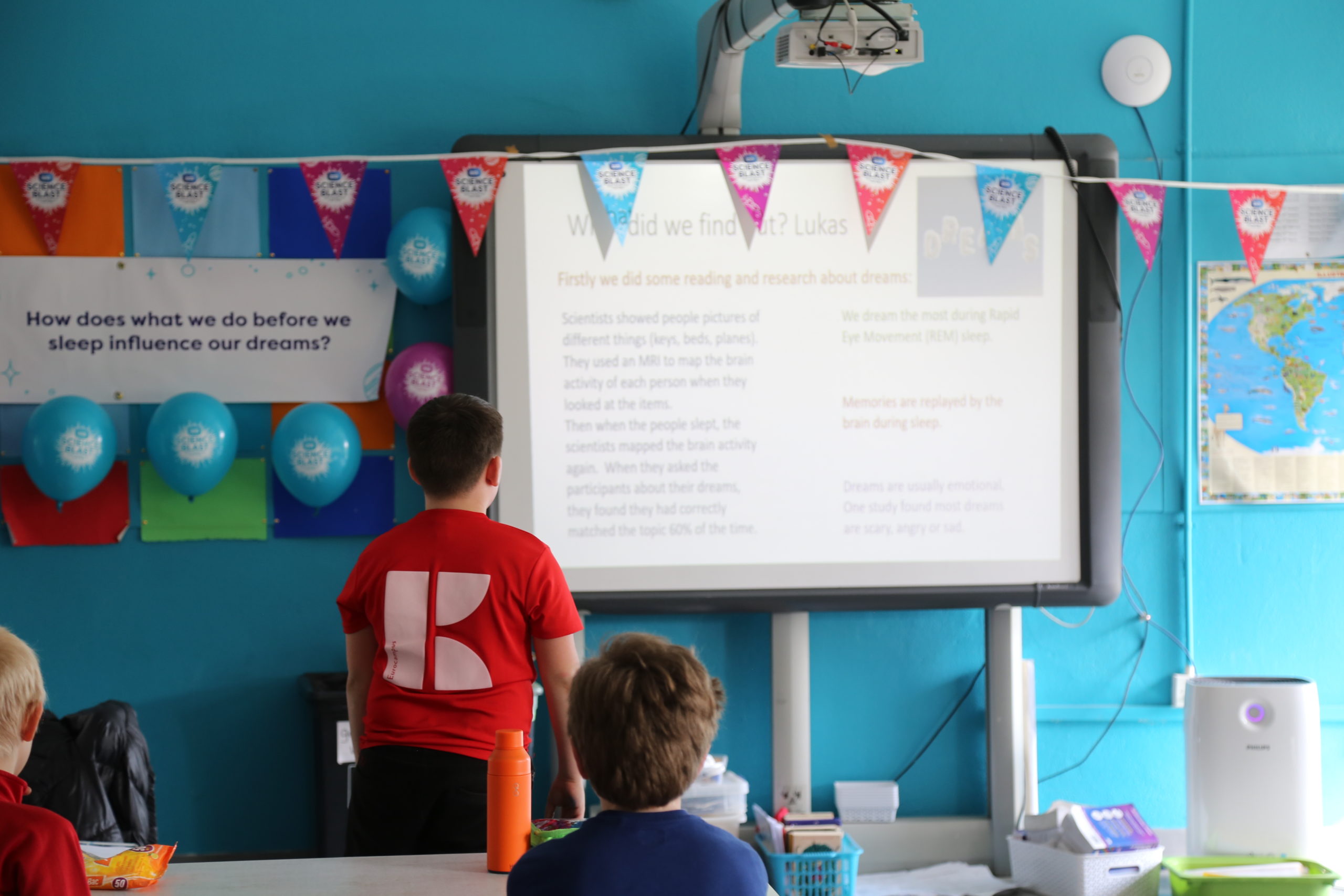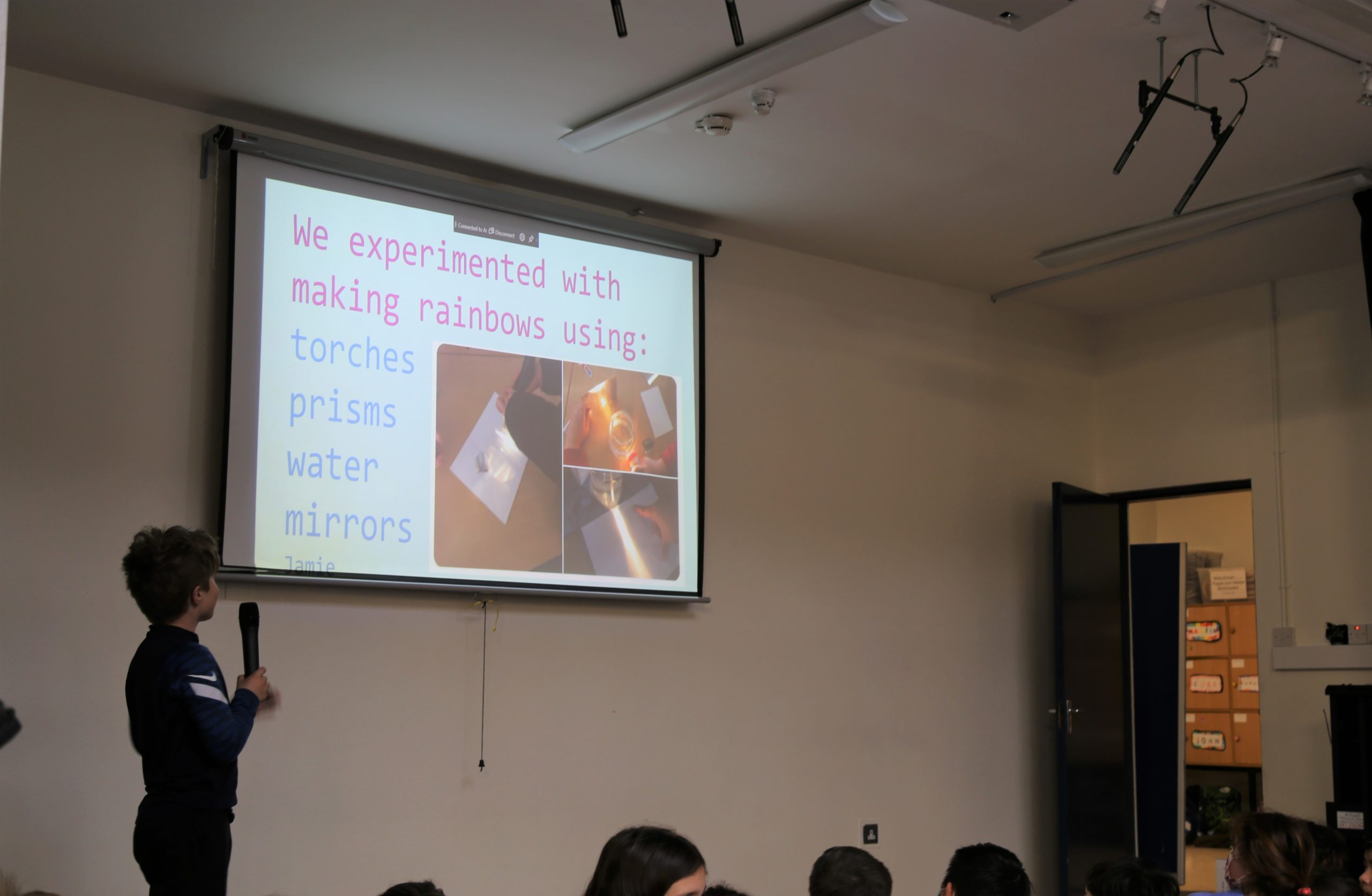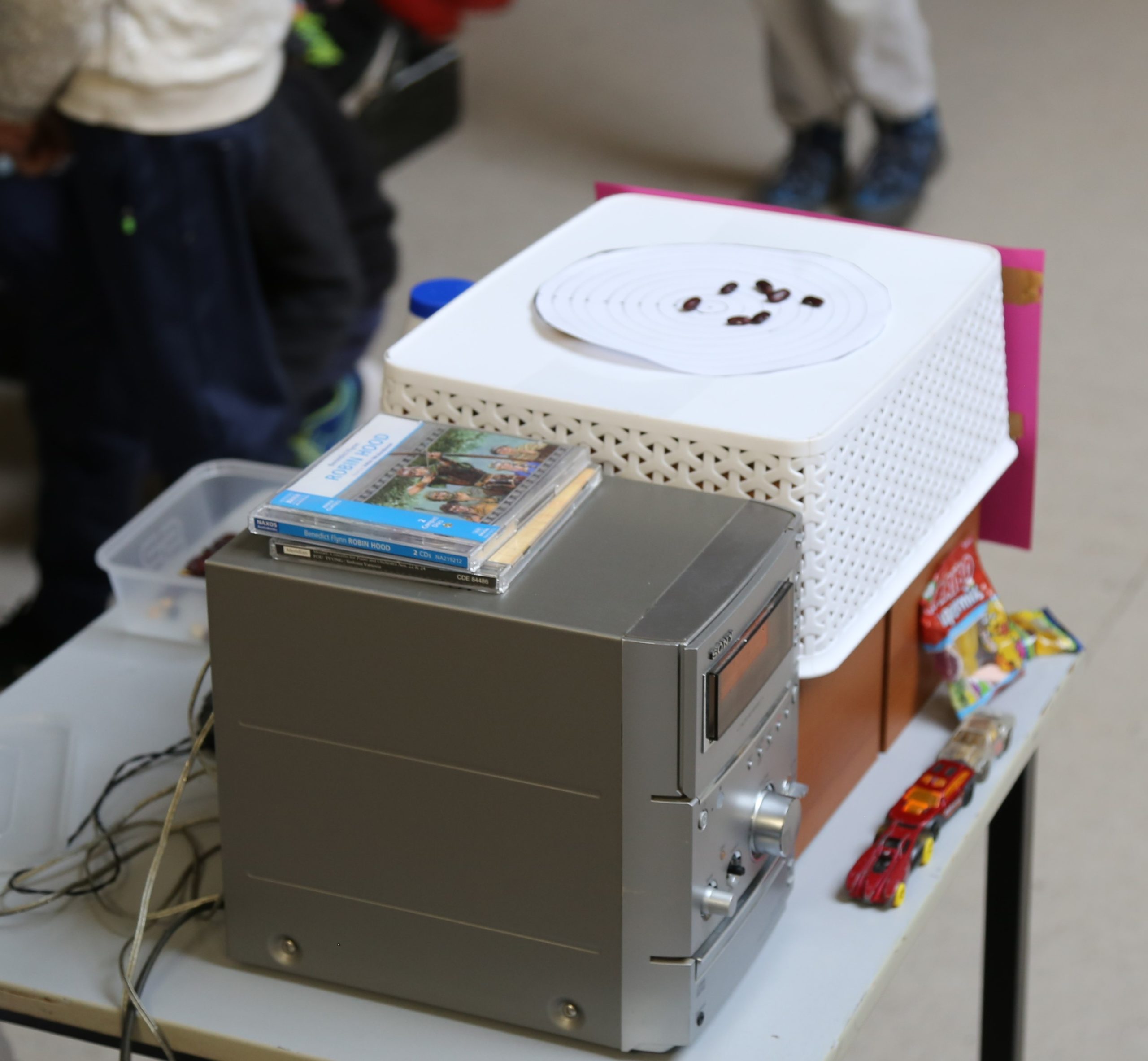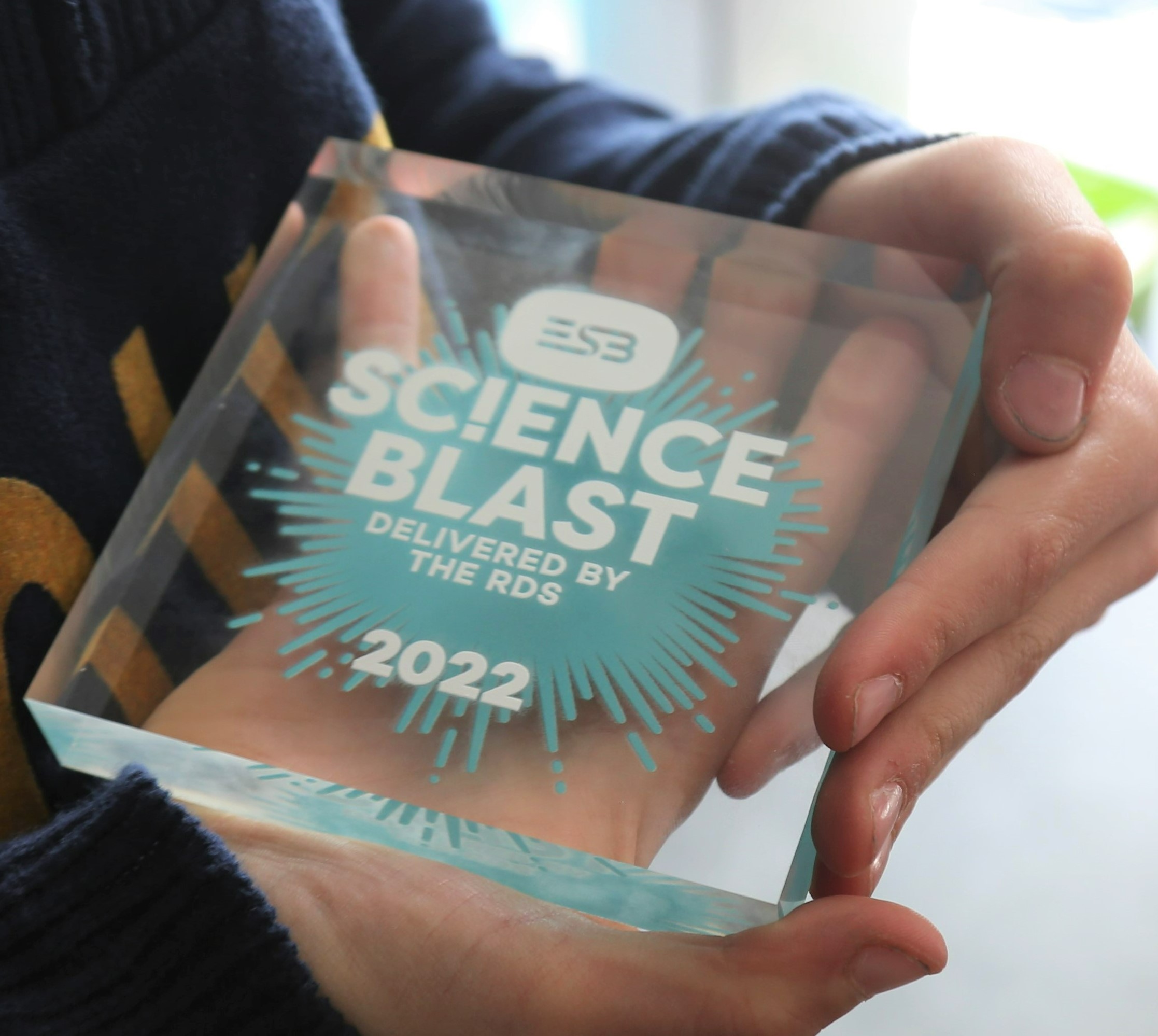Have you ever wondered ‘What challenges would we face trying to live on another planet? ‘How does what we do before we sleep influence our dreams? How do rainbows form a semi-circle? How does the distance between the light source and the water affect the shape of the rainbow? ‘Or why do objects move all around to the force of sound?
Our students from 4th Class and the Irish Science curriculum stream in 5th and 6th , with their teachers, Ms O’Brien, Ms Weatherford, Ms Hurturbise Doyle, Mrs Bowen and Ms Coakley participated in the ESB Science Blast initiative and have been working on their projects for some time investigating these and other questions. Over the last two weeks the children were presenting their findings in interactive sessions with the judges.
The children in 4A decided they wanted to investigate dreams. They started off with a research into how other scientists have investigated dreams and they found out interesting facts about brain activity during sleep. So the children decided they would like to survey their families about their dreams and predicted they would be able to influence their dreams by showing them pictures about a topic before they went to sleep. The following morning, each participant was interviewed and the children recorded the results. The children repeated this with four more topics. Together with their teacher Ms O’Brien, they collated the data and the children had completed 108 surveys. They found they were able to influence 46% of the participants’ dreams. The Science Blast judge was very impressed with the amount of data the class managed to gather.
In 4B, the children wanted to investigate rainbows and how they can change the shape of rainbows? First the children researched how rainbows are made and why they are semi-circles when we see them in the sky. They used prisms, torches, mirrors and water to create their own rainbows in the classroom. They predicted the distance between the light source and the prism/ mirror would change the shape of the rainbow. The students worked in groups as they measured the length of each curve and recorded the distance between the torch and the prism. They found out their prediction was correct. They also noticed the length of the curve was longer when the light source was closer to the prism/mirror. The Science Blast judge was very impressed with the collaborative nature of the investigation.
We also had an assembly on Tuesday where the students got the opportunity to present their projects to each other. Their teachers and all in their school are impressed by the efforts of all students and the very positive feedback they received from the judges. ‘Excellent work’ as the judges described across the board. The students are particularly thrilled to be awarded with a Science Blast 2022 Award. Congratulations to all students and teachers involved!
Science Blast encourages children’s natural curiosity and fosters their own interests through scientific and mathematical investigation. Each class is teamed with a STEM experts who in live interactive sessions provides feedback.
